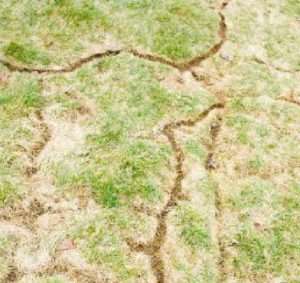Comprehensive Vole Pest Control Services in Utah
Comprehensive Vole Pest Control Services in Utah
Blog Article
Vole Insect Control Demystified: A Total Introduction of Problem Detection and Efficient Treatment Techniques
As homeowner and garden fanatics, the invasion of voles can be a relentless worry that calls for an organized technique for effective administration. By recognizing the behavioral patterns of these elusive rats, one can gain valuable insights right into their choices and behaviors. From refined indicators of problem to the execution of targeted control procedures, browsing the realm of vole parasite control requires a mix of expertise and tactical action. In this extensive summary, we will certainly explore the nuances of vole infestation detection and explore the realm of reliable treatment techniques that can secure your spaces from these below ground annoyances.
Recognizing Vole Behavior Patterns
Comprehending the complex behavior patterns of voles is important for effectively applying insect control steps in farming and residential settings. Voles, small rats that resemble mice yet with stouter bodies, are infamous for their quick reproduction prices and starved hungers for greenery. By delving right into their behavior patterns, bug control experts can gain valuable insights right into vole susceptabilities, practices, and preferences.
Voles are mostly herbivores, feeding upon a vast array of plants, light bulbs, origins, and roots. They are also prolific tunnelers, producing elaborate below ground burrow systems for nesting and foraging. By comprehending these habits, insect control professionals can purposefully place traps and bait stations along vole runways and access factors, boosting the possibility of successful elimination.
Moreover, expertise of vole habits patterns can aid in developing precautionary actions to prevent future infestations. By addressing elements that draw in voles, such as thick plants cover and conveniently available food resources, homeowner can make their premises less inviting to these damaging bugs - vole control utah. Finally, a thorough understanding of vole behavior is critical in devising sustainable and efficient insect control techniques
Identifying Indications of Vole Problem
Effective vole bug control begins with quickly acknowledging the indicators of vole problem on residential properties. One of one of the most typical indicators of vole existence is the visibility of surface area runways. These paths are slim pathways through yard or greenery that voles develop as they take a trip in between their burrows and food resources. Furthermore, vole droppings are one more clear indicator of problem. Vole droppings are tiny, round pellets that are commonly found along their paths or near their burrows.
In addition to droppings and runways, nibble marks on tree bark and vegetation are additionally indications of vole activity. The presence of burrow openings in the ground indicates an active vole population.
Being alert for these signs can help residential or commercial property proprietors identify vole invasions early and take appropriate bug control actions to stop further damages.
Implementing Targeted Control Steps
What certain strategies can be employed to successfully apply targeted control actions for vole insect monitoring on residential or commercial properties? Applying targeted control steps for vole bug administration needs a multi-faceted approach that integrates both prevention and eradication methods. Among the crucial strategies is environment alteration, which involves getting rid of vole-friendly environments such as high lawn, weeds, and debris near buildings. Installing obstacles like hardware fabric or crushed rock around garden beds and tree trunks can also aid hinder voles.
Trapping is another efficient approach for managing vole populaces. Live catches can be strategically put along vole runways or burrow entrances, baited with peanut butter or apple slices. Once caught, voles need to be humanely removed to a different place to avoid reinfestation.
Rodenticides can be used as a last resort for serious invasions, yet caution should be worked out to protect against injury to non-target pets. When utilizing rodenticides for vole control - vole control., it is critical to comply with all security standards and regulations.
All-natural and Environment-friendly Remedies
The fostering of eco mindful methods can play a pivotal duty in taking care of vole populaces without creating damage to the community. All-natural and eco-friendly solutions offer a sustainable approach to vole bug control, reducing using dangerous chemicals and advertising biodiversity in the impacted areas.
One efficient all-natural technique is making use of killer urine or killer decoys. Predators like owls, foxes, and serpents are the vole's all-natural opponents. By strategically positioning killer pee or decoys around the ravaged locations, voles might be my company hindered from clearing up in those places.
In addition, planting vole-resistant plant life can help in minimizing vole damage. Plants such as daffodils, crown imperials, and Siberian squill are recognized to be unappealing to voles and can function as natural repellents.
Additionally, producing physical barriers like cable mesh or gravel around prone plants can avoid voles from accessing them. These barriers can aid shield yards and landscapes without posing any threat to the environment or various other non-target species. By incorporating these environmentally friendly and natural treatments, vole problems can be managed efficiently while keeping eco-friendly equilibrium.
Long-Term Prevention Techniques
To sustainably address vole problems over time, applying aggressive measures is essential for lasting avoidance approaches. By lowering thick plants, mulch, and mess around basics structures, you can make your residential or commercial property much less attractive to voles.
Normal surveillance of vole activity is necessary for early discovery of any kind of indicators of infestation. Setting up vole catches can aid in regulating their population prior to it becomes a full-blown infestation. It is also important to seal off any kind of access factors to structures or structures to avoid voles from acquiring access.

Final Thought
To conclude, comprehending vole actions patterns, identifying indicators of infestation, carrying out my website targeted control measures, utilizing natural and green treatments, and executing lasting prevention techniques are crucial action in successfully handling vole problems. By being positive and taking the needed actions to attend to vole issues promptly, individuals can effectively regulate and protect against vole invasions in their residential properties.

Report this page